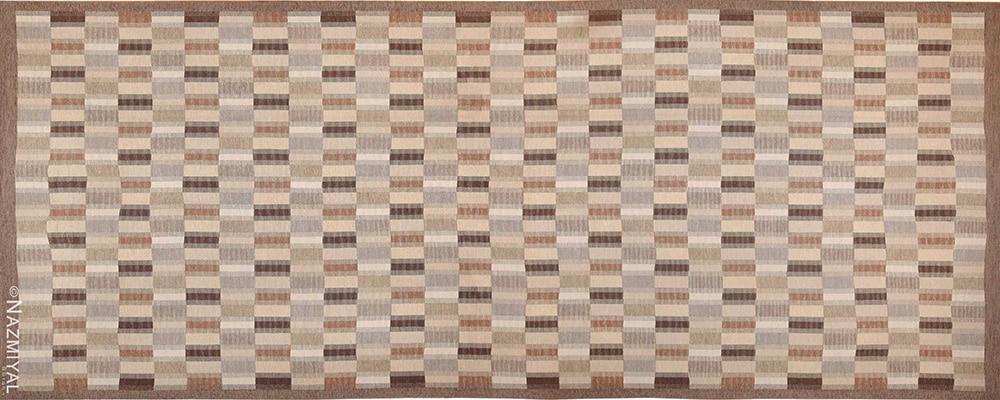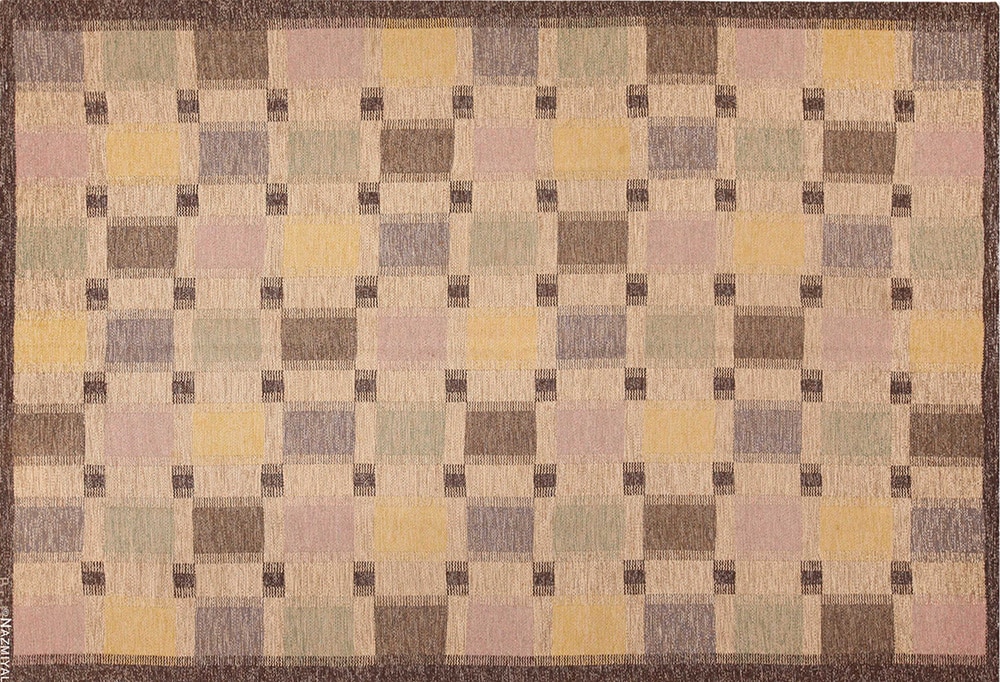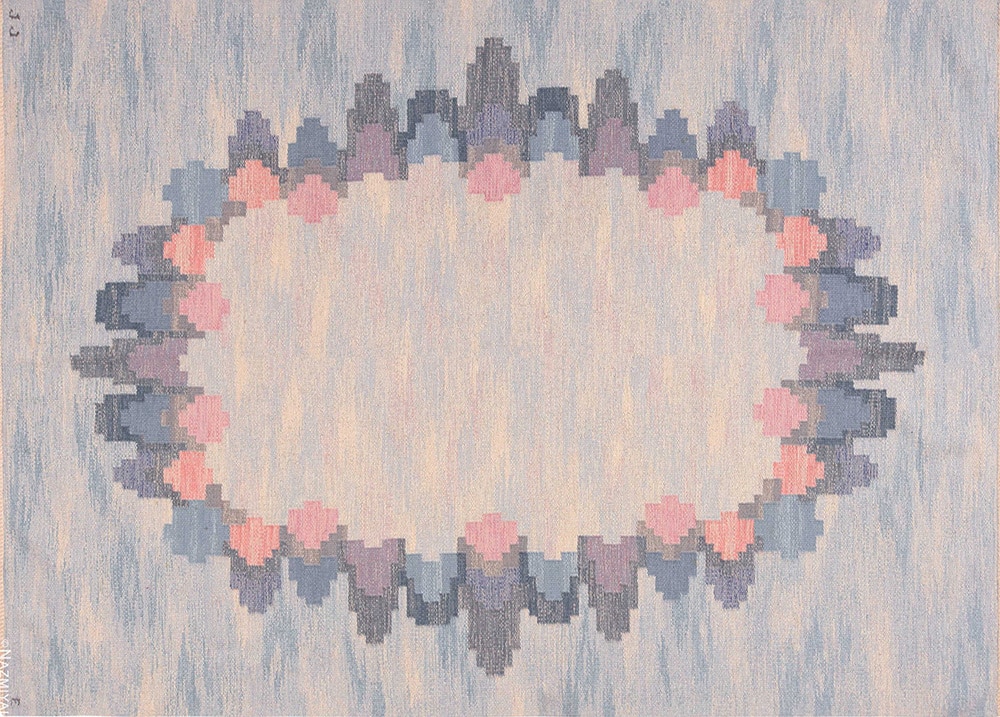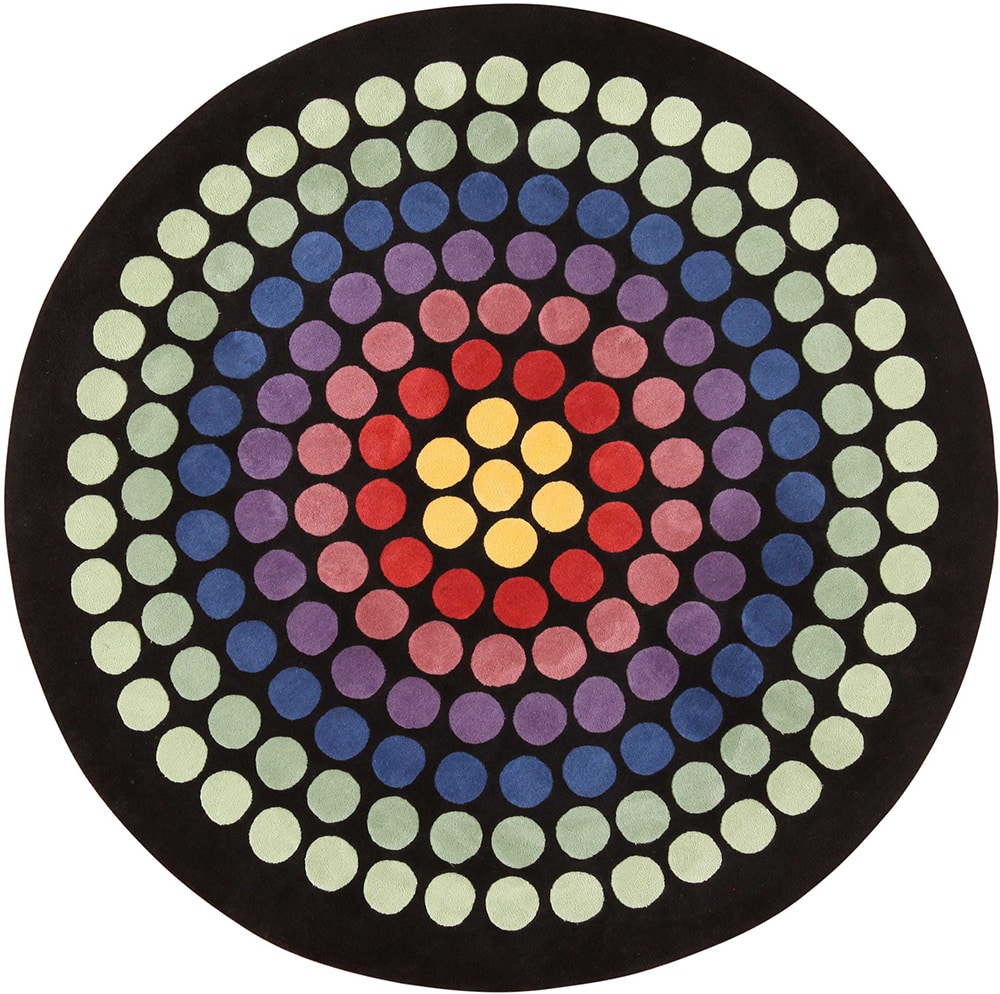A Guide to Scandi Home Decor and Interiors
Shop Scandinavian Rugs | Shop Swedish Rugs
What is Scandi Decor?
“Scandi decor” is short for “Scandinavian decor” or “Scandinavian interior design”. The term Scandi decor style refers to a minimalist and functional interior design style that emerged in the mid-20th century in the Nordic countries, including Denmark, Sweden, Norway, Finland, and Iceland. It emphasizes simplicity, natural materials, and a clean, uncluttered aesthetic.
What are the main characteristic of the Scandi decor approach?
Here are some key characteristics of Scandi decor:
- Simplicity: Scandinavian design focuses on clean lines, minimal ornamentation, and a sense of understated elegance. It aims to create a sense of calm and serenity in a space.
- Light and Bright: Due to the long winters and limited daylight in the Nordic region, Scandinavian interiors often feature a light color palette to maximize the use of natural light. White walls, pale neutrals, and light wood tones are commonly used.
- Natural Materials: Scandi decor highlights the use of natural materials such as wood, particularly light-colored woods like birch and pine. These materials add warmth and texture to the space. Other natural elements like stone and leather may also be incorporated.
- Functional Design: Scandinavian design is rooted in functionality and practicality. Furniture and decor pieces are often multi-functional and have clean, simple forms. There is a focus on usability and efficiency without sacrificing aesthetics.
- Hygge Concept: Hygge, a Danish concept that promotes coziness and well-being, is often associated with Scandinavian design. Soft textures, warm lighting, and comfortable furnishings create a sense of hygge in a space, making it inviting and cozy.
- Minimalism and Organization: Clutter is avoided in Scandi decor. Storage solutions are often integrated into the design to maintain a clean and organized space. This minimalist approach helps create an uncluttered and airy atmosphere.
- Connection to Nature: Scandinavian design draws inspiration from the surrounding natural landscapes. Bringing elements of nature indoors is common, such as houseplants, natural fibers, and organic patterns.
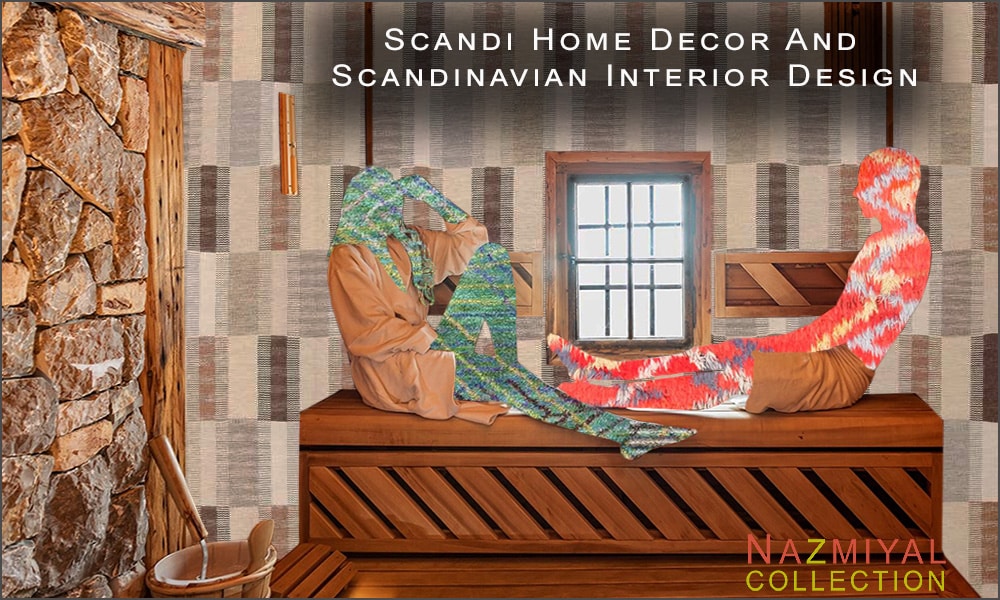
Scandi Home Decor And Scandinavian Interior Design
Overall, Scandi decor embraces simplicity, functionality, and a connection to nature. It has gained popularity worldwide due to its timeless appeal and ability to create a serene and inviting living environment.
What Is The Scandi Home Decor and Interior Design Approach?
Scandi decor and interiors have become popular right now. Scandinavian decor is also known as Nordic and nicknamed “Scandi,” it is a minimalist style that makes use of varied textures and contrasting colors to create the greatest impact without over-saturating a space. This general description, however, gives only a vague sense of how to actually go about creating a space using Scandi interiors. If you want to be able to exemplify this trendy design mode in your interior spaces, you’ll need to know more about where this design initially came from and how it is implemented in modern decorating. We’ll go in depth here as well as provide you with examples of how to make the magic happen.
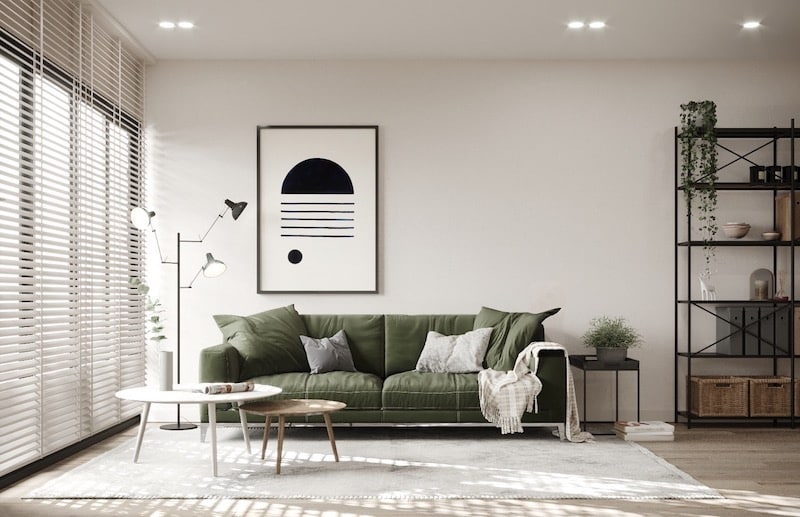
Scandi decor focuses on contrast and minimalism.
What Are The Origins of Scandi Interior Design?
While the official introduction of Scandi design into the world began in the 1950’s, its origins go much further back and are more political than you may have imagined. In the mid- to late 1800’s, Art Nouveau took a nod from the Romantics by featuring naturalistic designs in the home. Yet this kind of design was still only available to the privileged classes who could afford to decorate their homes in such a way.
This changed to some degree after World War I, when people began to think that the old political systems were not working anymore. Art Nouveau was soon replaced with the industrialized and sleek design elements of Art Deco, which saw its peak in the roaring ’20’s.
Art Deco may have offered a refreshing new take on interior design that showed the glamour made possible by the industrial revolution. It certainly offered a different take on art than people were used to, in no small part thanks to its inspiration from the Swiss dadaist, Russian “constructivist” and German Bauhaus School movements.
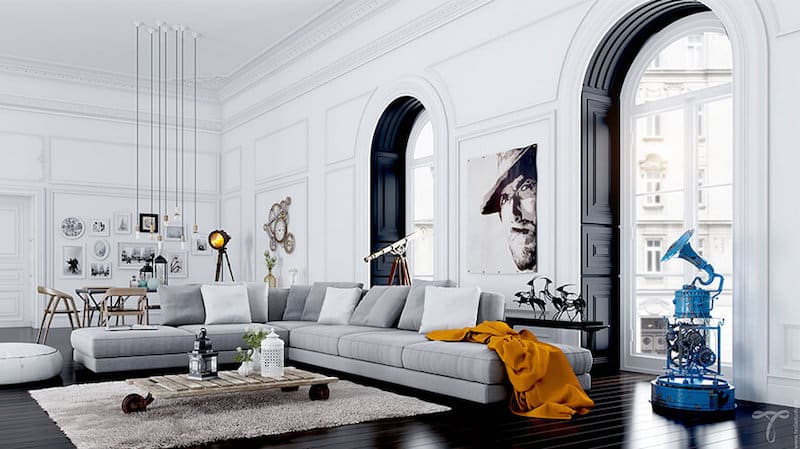
Scandi interior design has its roots in art deco and the Bauhaus movement.
However, one thing remained the same: An elaborately decorated home was still the mark of privilege, and to truly actualize the Art Deco style, a homeowner had to have the funds to purchase all the required pieces. This was the last aspect of the pre-industrial aristocratic interior design philosophy that needed to fall before modern design could truly flourish.
It needed to fall in the sense that its fall was inevitable. Both the Great Depression and World War II sparked outrage at the ruling classes while people additionally were seeking to recover from the losses of the past decade. In this way, the rise of Scandi decor is interrelated with the rise of democracy in European nations. Products that only wealthy people could once afford were now accessible for people of much more humble financial means. In addition to this, a new emphasis was placed on functionality rather than just beauty.
The Scandinavian countries hosted several conferences that further cultivated these new values, leading to an expansion of this new “modernist” design through the ’40s. By the ’50s, Scandinavian interiors had established itself as a distinct style. In 1954 Elizabeth Gordon, editor of House Beautiful magazine, traveled to various places in Scandinavia, bringing public attention to Scandi decor and design.
In the USA, Scandi decor has been known for a while, finding a particular resurgence in the ’90’s and early 2000’s. While it is no longer associated with the pro-democratic political sentiments, Scandi design remains an enduring and beloved fixture in the world of American interior aesthetics.
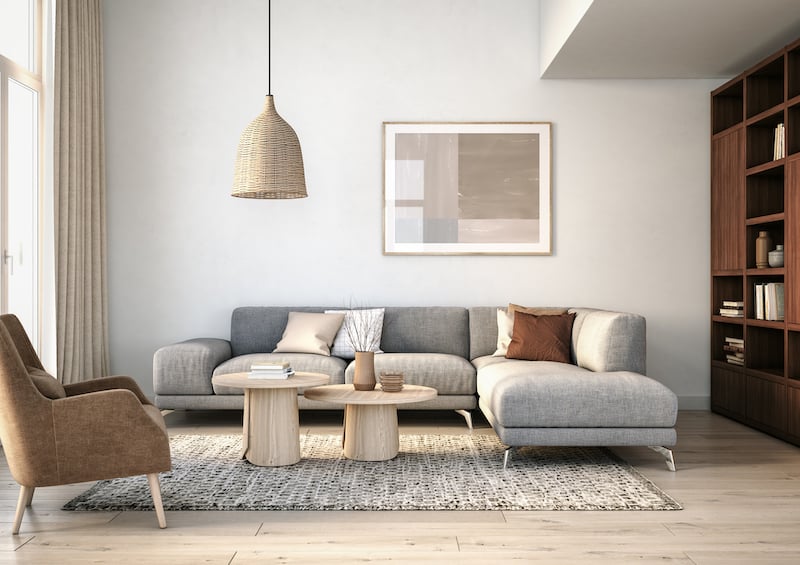
A living room with Scandinavian interior design.
What Are The Main Scandi Home Decor and Interior Design Elements?
So what makes Scandi decor what it is?
A home that features a “proper” Scandinavian interior design will have multiple iterations of these elements:
- High contrasts, often involving black and white
- The use of natural light to highlight certain areas
- Modern furniture that goes easy on the color palettes
- Simple furniture that is orderly, not cluttered
- If featured art, often in multiples of a similar design
What holds it all together is the continuation of the theme throughout a whole house. If you have executed this correctly, things will seem well-spaced and harmonious while still being cozy and inviting.

Scandi interior design is characteristically uncluttered.
What Are Some Scandi Interiors And Home Design Examples?
To keep things simple and elegant, a muted gray or beige makes a good start. To make things cozy, try using such a unified and reserved color theme in combination with variation of textures. A bedroom that uses a single color for both the rug, curtains, and pillowcases while trying a different color for the sheets is another example of the effective use of colors. A recurring theme in artwork can add a fun and personal touch to the attitude of a home.
For instance, a set of prints featuring different assortments of vegetables and herbs would fit nicely in a kitchen or dining room.
If this article has you excited to try your own Scandi home decor and interior design theme, a good recommendation is to work from the ground up by starting with a fitting rug. Nazmiyal Rugs has an outstanding selection of both modern rugs as well as antique and vintage area rugs that can fit into this or just about any other design.
Below are just a few vintage Scandinavian rugs for you Scandi decor Projects:
This interior design blog that talks about Scandi home decor and Scandinavian interior design was published by Nazmiyal Antique Rugs


